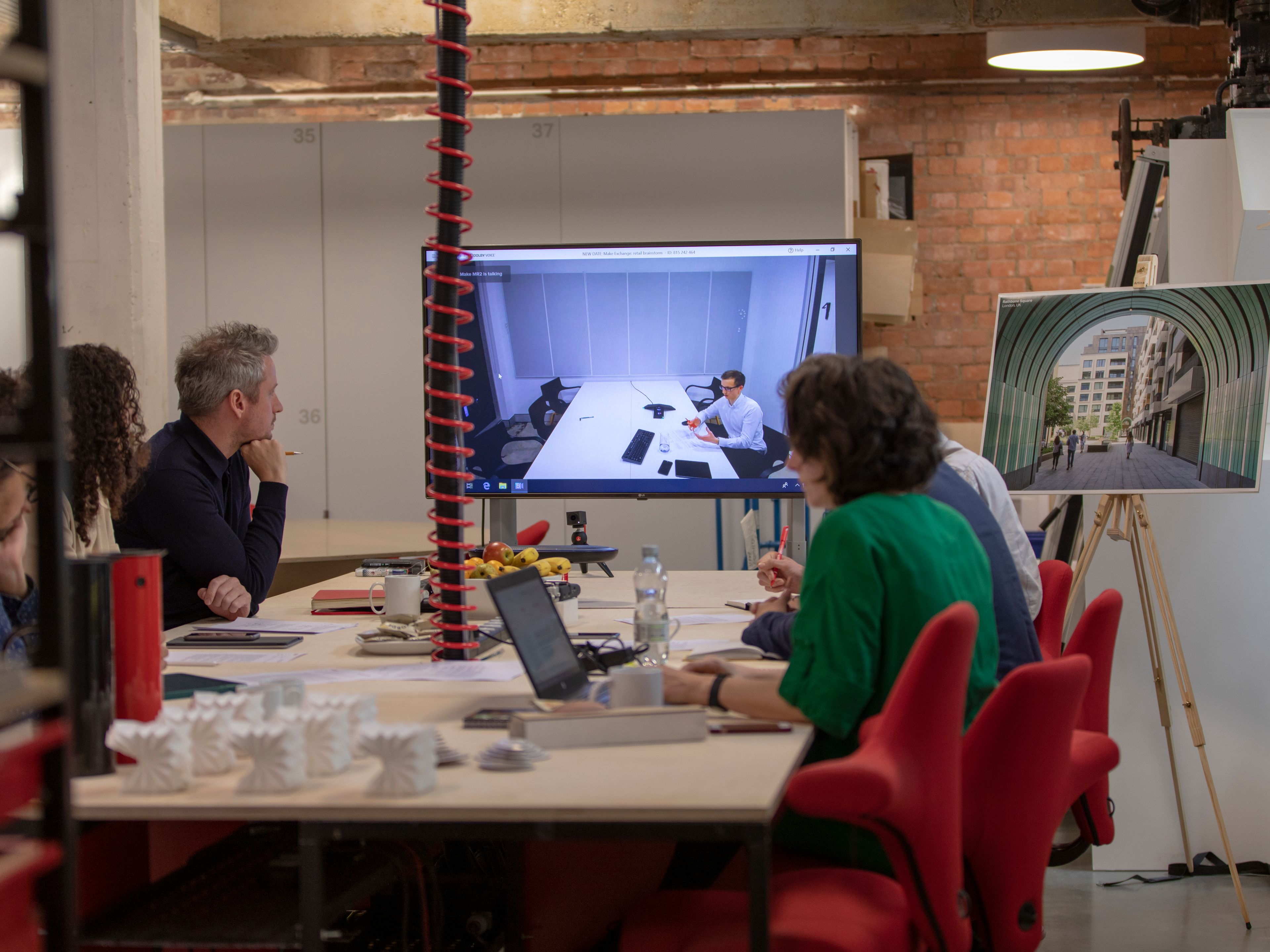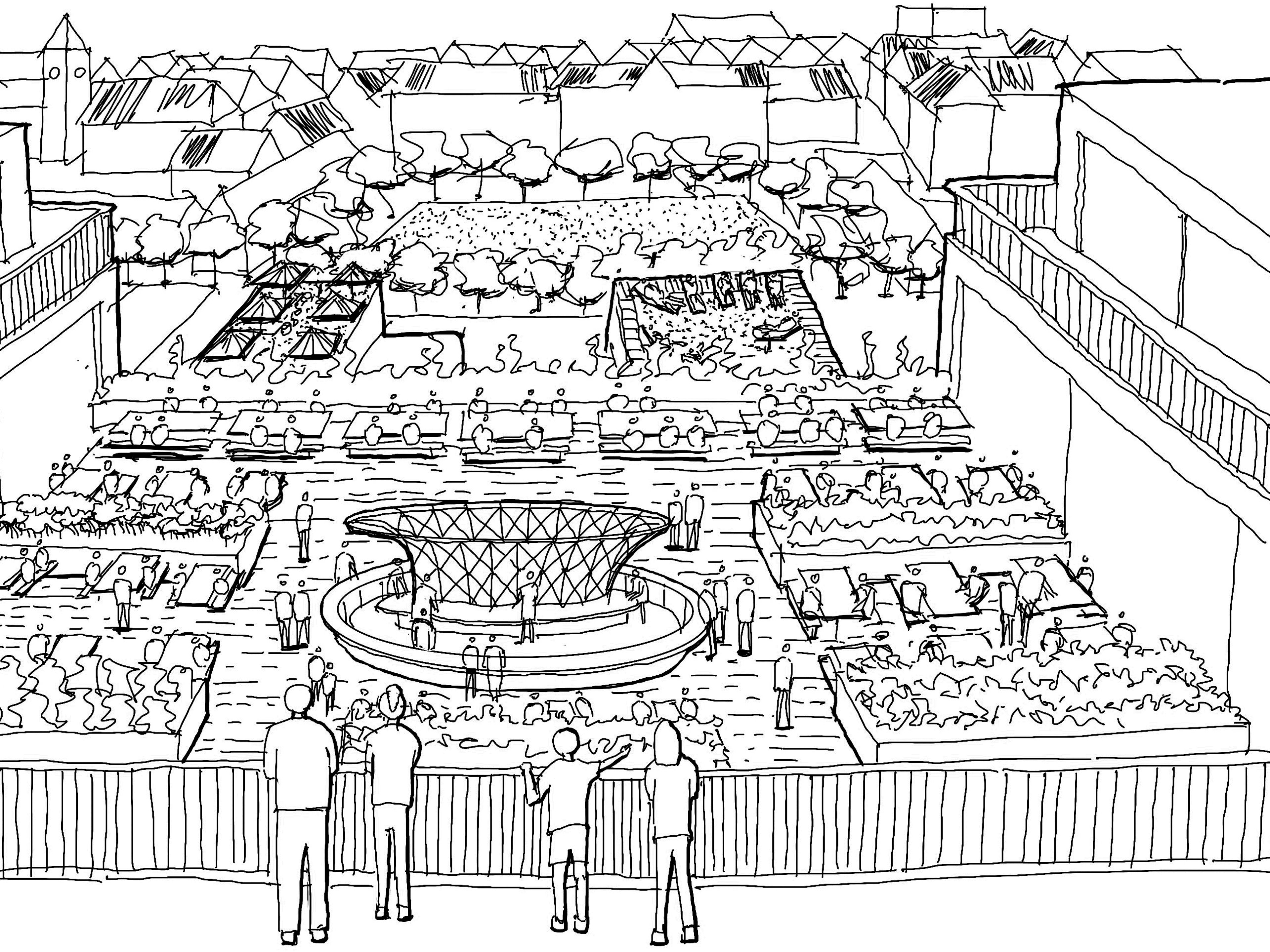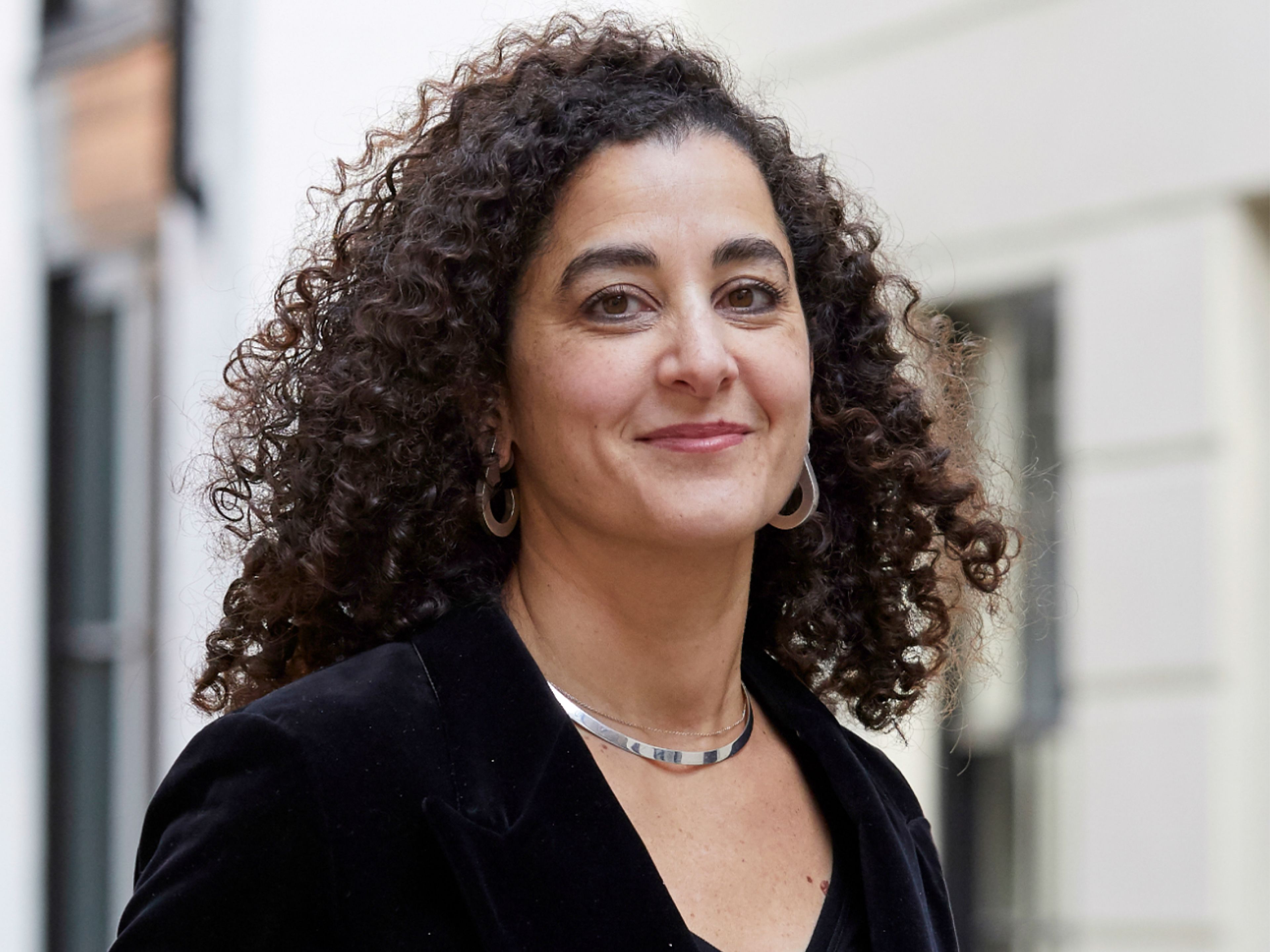White City – Retail as part of the placemaking mix
by Jack SallabankFor the better part of the last decade, West London’s White City has been a construction site. Five different landowners have set to on building new homes, office space, a university campus, and a significant quantum of retail and F&B.
Cranes will still punctuate the skyline for a few more years, but over the last 12 months residents have moved in, offices have been occupied, and shops and restaurants have begun to buzz with activity. The regeneration of White City, established as a GLA Opportunity Area in the 2004 London Plan, is edging closer to completion.
For Stanhope, Westfield and TfL – three of the developers engaged in transforming White City – attention has turned to animating the location and creating a greater sense of place. In particular, there’s a heightened emphasis on retail strategies that bring communities together.
Jack Sallabank met up with these developers to learn about their approach to retail, their observations about the current market and the role of retail as part of the placemaking mix.
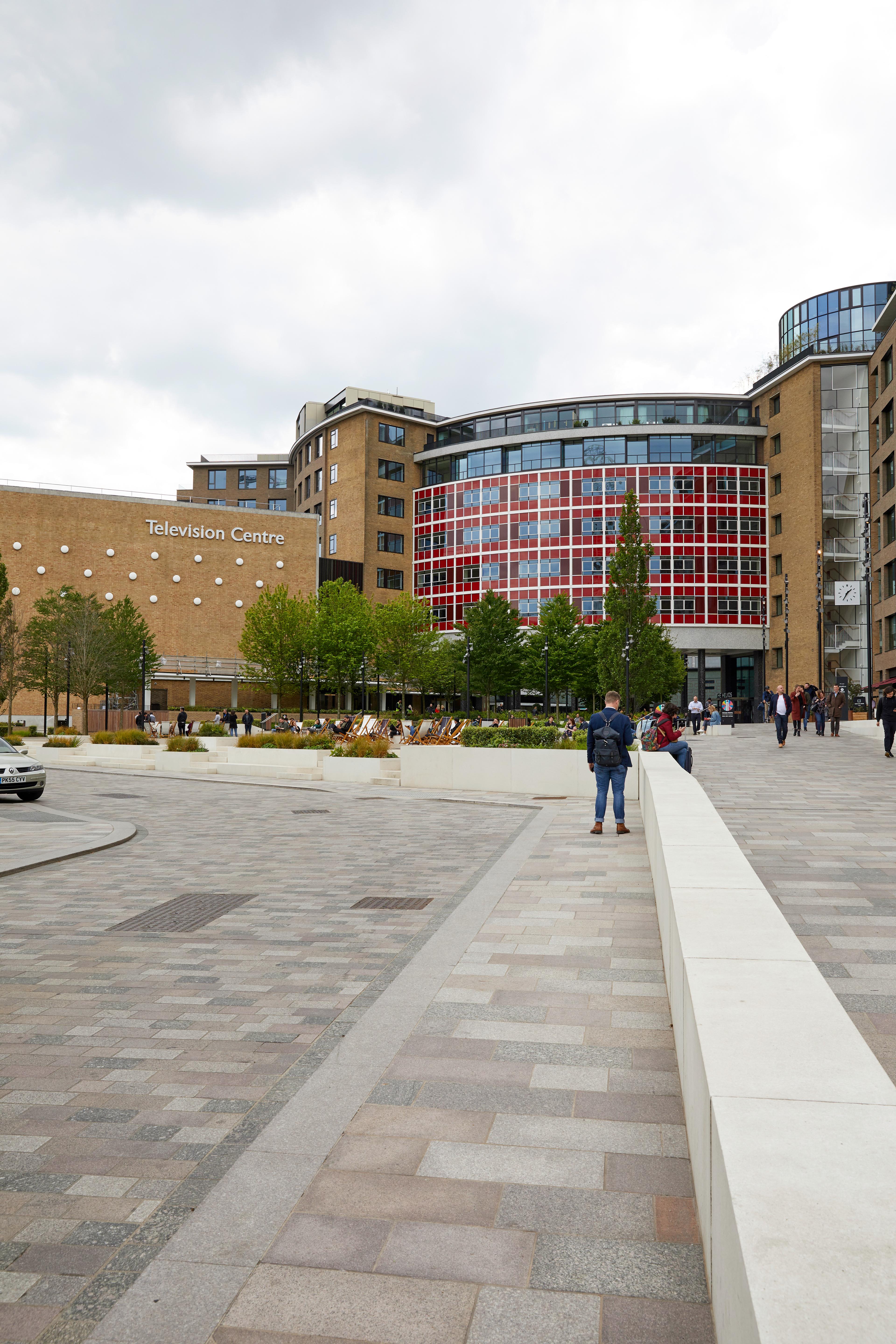
The former BBC television studios are the centrepiece of the White City development.
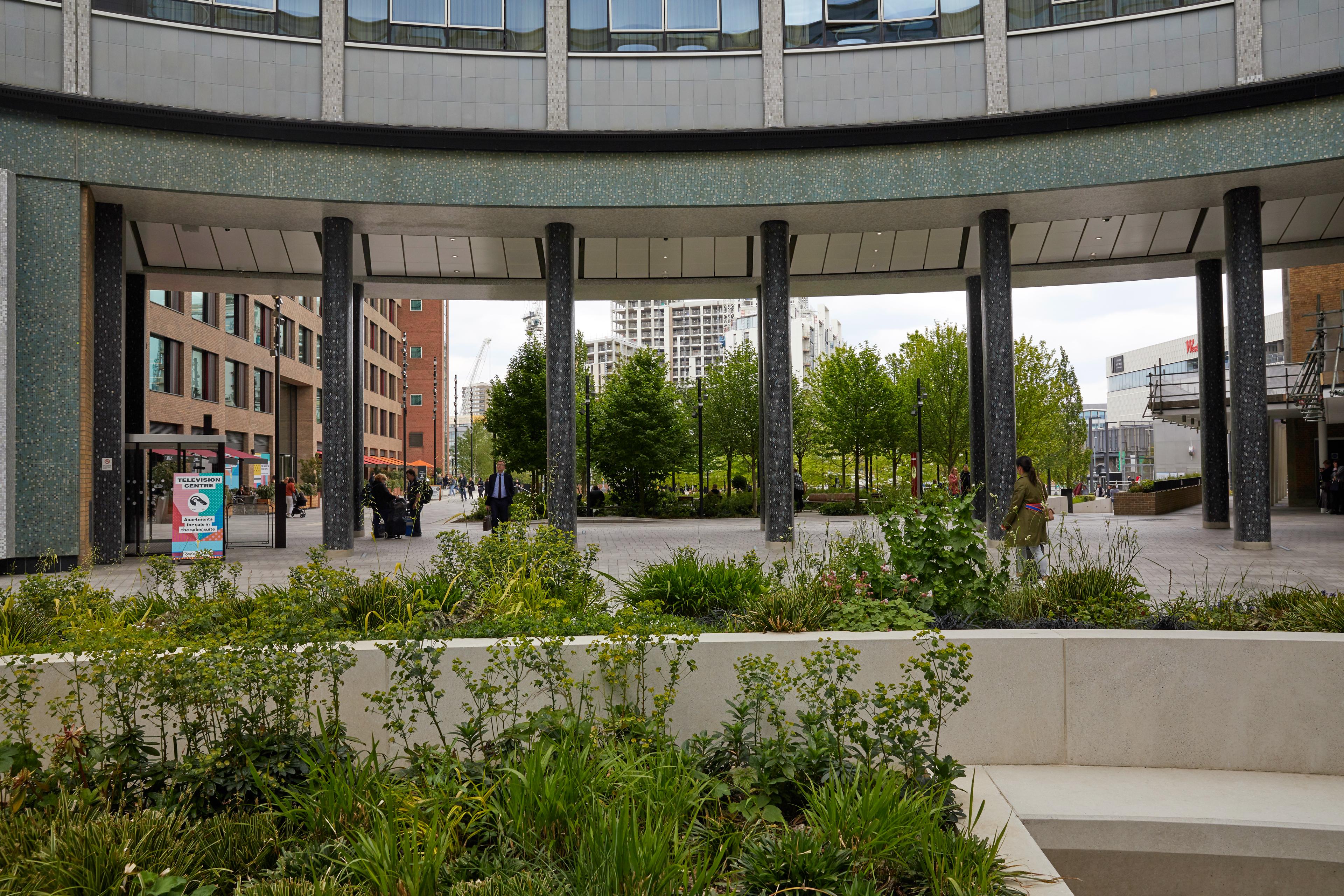
A mix of uses – including office, retail and F&B – spills out into public realm.
“You have to make sure that you work hard to get little things right, such as wayfinding, signage and branding.”
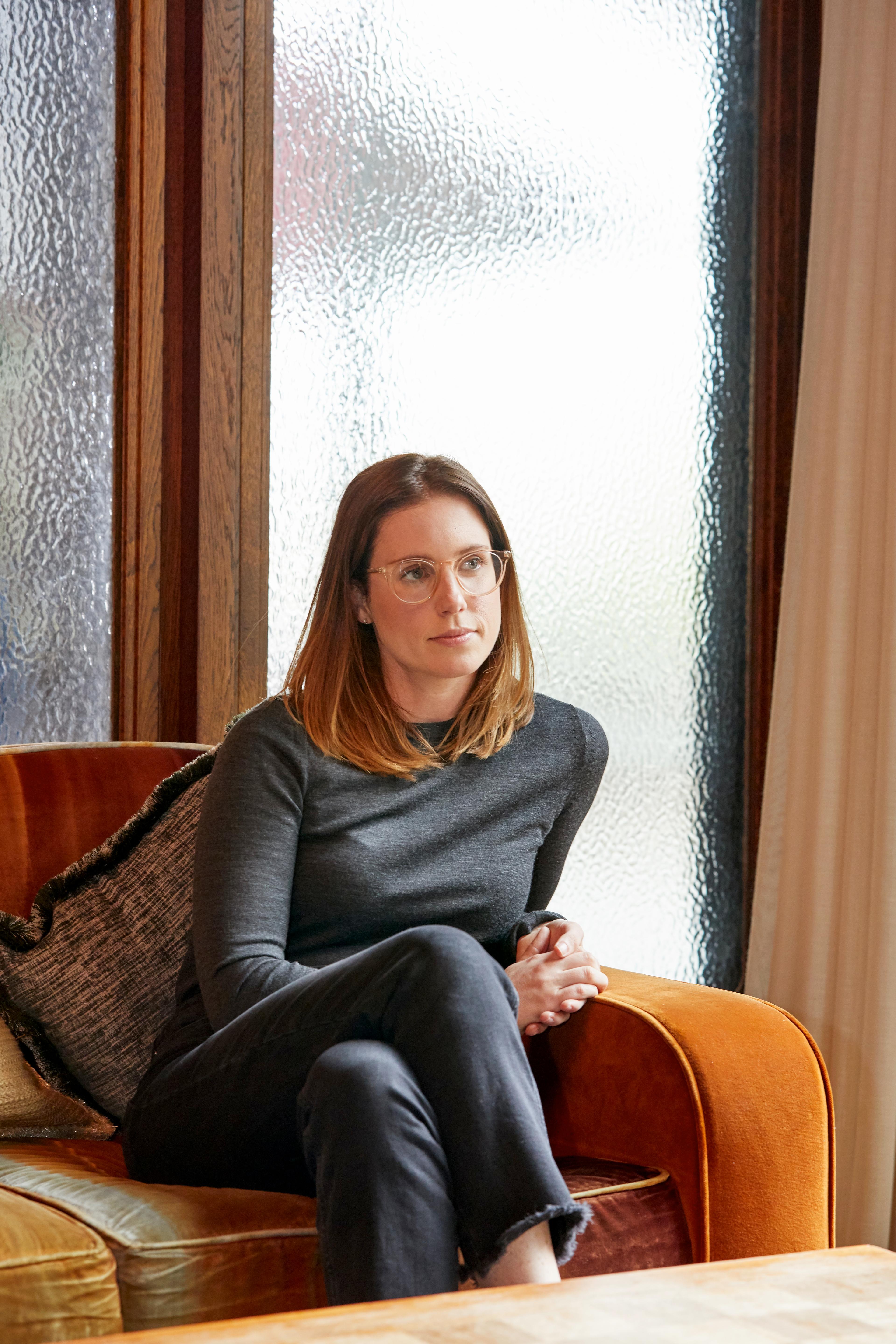
Millie Wilson
Bruce Gillingham Pollard
One of the first projects in White City to achieve PC and start welcoming guests was the newly renovated Television Centre, formally the home of the BBC. Millie Wilson from retail agent Bruce Gillingham Pollard acted on behalf of Stanhope for the Television Centre and White City Place schemes.
Jack Sallabank: Television Centre is an iconic building that has been opened up to the public for the first time. What was your approach with retail and F&B?
Millie Wilson: Two things were important. Firstly, Westfield was already here, which is a huge anchor for White City. Secondly, just before we were appointed to work on Television Centre, Soho House members’ club had signed a lease, which definitely helped put the building on the map, given that they are such a strong tenant. Our strategy needed to ensure that we differentiated ourselves from what Westfield offered and instead built on the back of how iconic the building is and on complementing Soho House. Effectively our strategy has been to create more of a premium side, but with a range of offers that make it accessible and welcoming for everyone.
JS: What are the key things to get right when introducing retail into an area like White City that’s undergoing so much change?
MW: It’s not just what the retail is, but it’s getting the environment that it sits within right. You have to make sure that you work hard to get little things right, such as wayfinding, signage and branding. These are all hugely important to a placemaking approach.
JS: You advise on a number of retail schemes across London. How is the market changing?
MW: The entire landscape is changing, though reading the newspapers would make you think it is just doom and gloom for retail, which is really not the case!
Retailers are looking at the number of stores that they need and in some instances disposing of those that are surplus to requirement. But more interestingly, we are seeing more things going on in stores, and they are not just a place for you to go and try on a product and leave. This is creating more of a community where retailers can get to know their customers more.
Also, the size of restaurants and retail units is getting much smaller. Five years ago your ‘traditional’ retail unit would have been between 3,500ft2 and 5,000ft2. We are now creating 1,500ft2 units because people don’t want to feel like they’re sat in a vast area; they want a more intimate experience. Again, this is changing the way we plan schemes and customers experience the space.
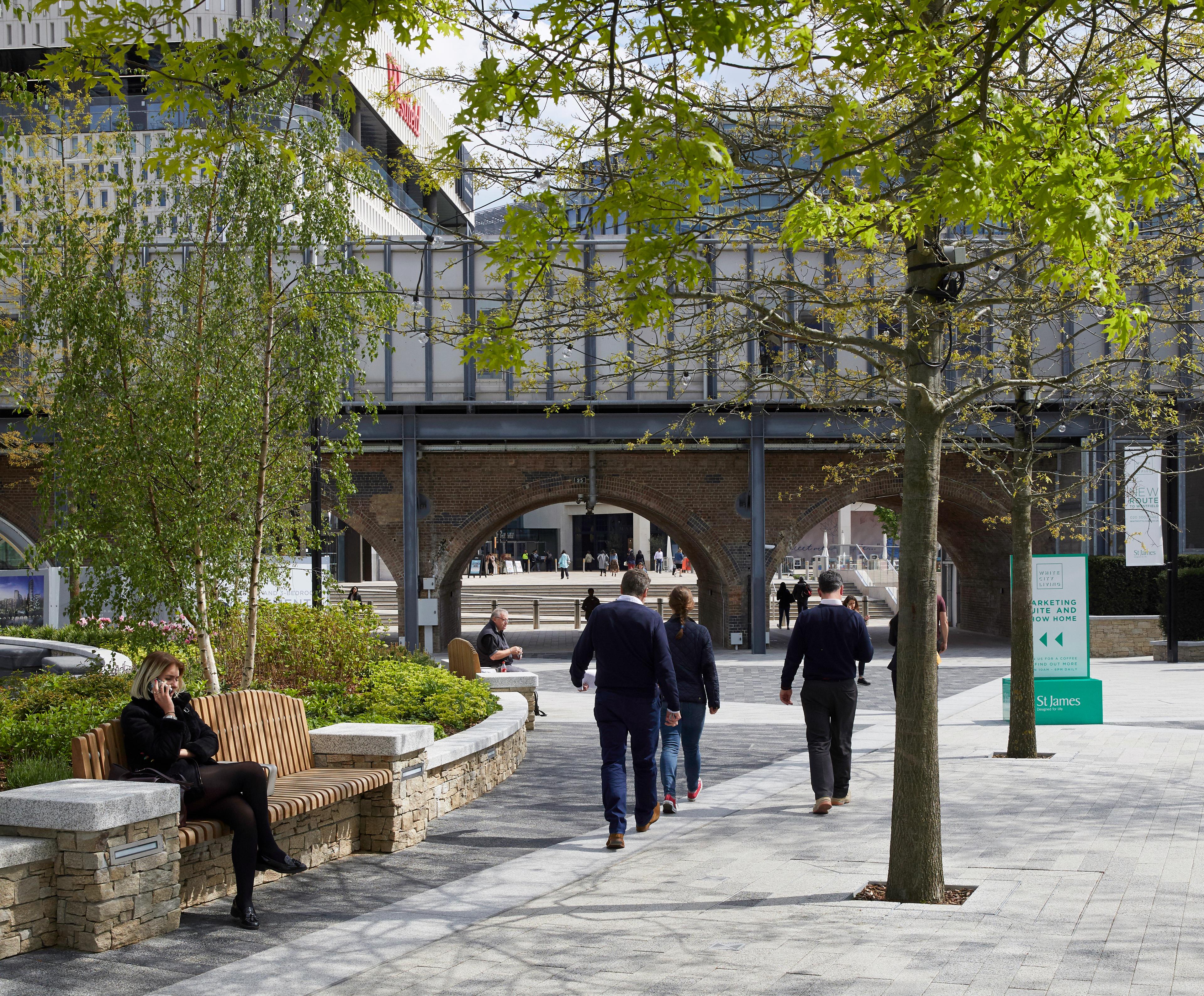
White City stitches into the wider area, providing links and connectivity.
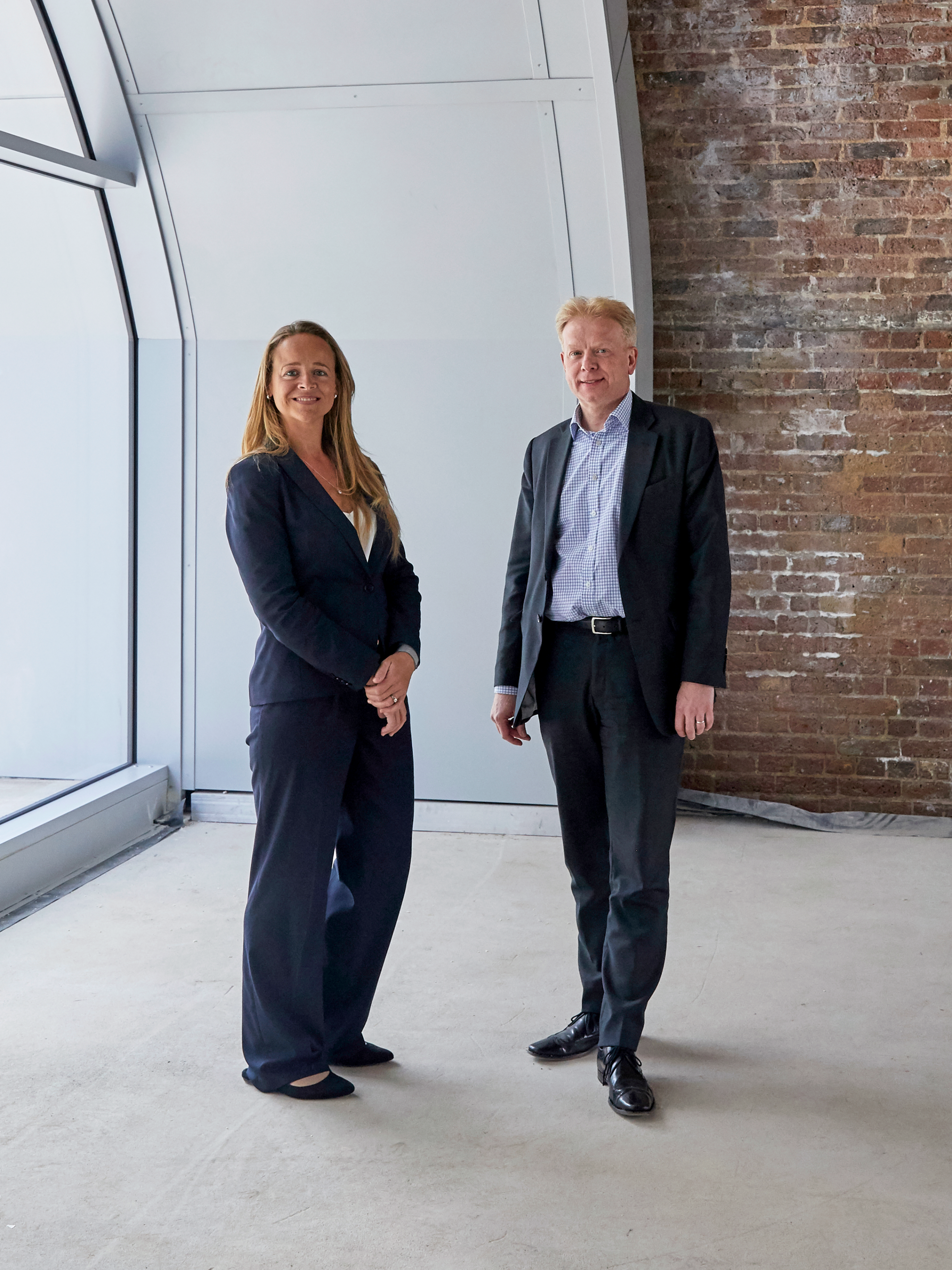
Laura Ferine (left) and Nigel Pickup (right), TfL.
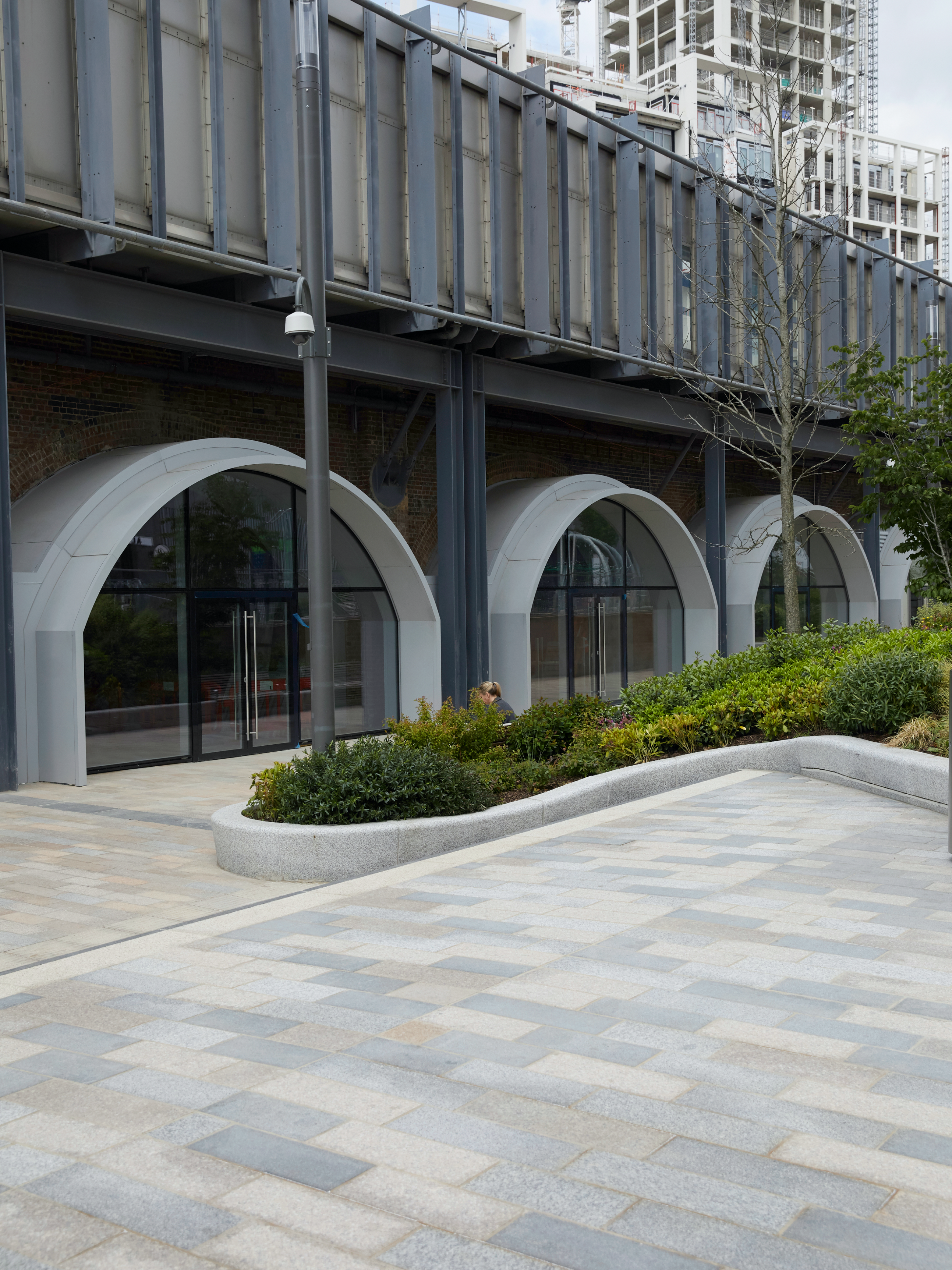
TfL plans to bring different retail into the railway arches facing Westfield.
South of the Television Centre, towards Westfield, are 31 TfL-owned railway arches that bridge over Wood Lane. Nigel Pickup, Head of Commercial Property, and Laura Fernie, Senior Commercial Asset Manager, are currently part of the TfL team responsible for transforming the arches into a curated retail mix.
Jack Sallabank: What’s been your approach to these disused arches?
Laura Fernie: We are surrounded by these amazing developments, which have presented TfL with a unique opportunity to refurbish and bring our arches into the commercial estate. The arches have dual frontages opening onto both Westfield Square and White City Living’s new public park, which is a massive benefit to our tenants and will help activate the public realm. The first few arches will likely be occupied by cafés, bistros and independents. Thereafter, we want to provide convenience and amenity retail to the thousands of residents moving to the area.
Alongside the commercial arches, we have introduced pedestrian arches to help connect the different developments in White City. We’re in the heart of this area, and the refurbished arches aid permeability and have helped create a sense of place. For TfL, it’s about making sure our arches act as an opportunity and not a barrier.
JS: Your arches front onto Westfield. Is that a blessing or a challenge when creating your own retail offering?
Nigel Pickup: We’re trying to create a tenant mix that complements but is somewhat different to Westfield and the big branded retail. We have an opportunity, because of the nature of the arches, to be different and provide something that supports the local community. We want to provide a different curated type of retail that provides for the needs of the workers in White City and for a nightlife economy as well.
JS: These arches sit as part of a wider portfolio of over 800 arches spread across East, West and North London. What is the wider approach in terms of the arches’ development?
NP: Our focus is to invest in those arches to bring forward opportunities for businesses to thrive and grow within new and refurbished work and retail spaces in core locations. Our approach is to try to integrate within the local communities to give businesses the chance to take space in refurbished opportunities where we can assist with the growth of London both from a retail and also a workspace perspective.

Emma Hindes (left) and Katie Wyle (right), Westfield
Sitting opposite the TfL arches is the Phase 2 expansion of Westfield. Opened in 2008, Westfield London was the brand’s global flagship scheme. General Managers Emma Hindes and Katie Wyle are responsible for making sure that ten years on, the Phase 2 development allows the brand to remain relevant.
Jack Sallabank: What drove the Phase 2 expansion of Westfield London?
Emma Hindes: The Phase 2 expansion took place within a planning framework, which is the White City Opportunity Planning framework. Other transactions were taking place in the area with other developers in White City, so it felt like the right time to expand.
As part of the development we’ve managed to bring in John Lewis and Primark, which were our two most requested retailers. We’ve brought in approximately 100 new units, which is a mixture of retail, restaurants and leisure. We’ve enabled some of our existing tenants to expand into more space and have brought in some new retail concepts. Most importantly, with Phase 2 we’ve transitioned the centre from being a retail centre into a mixed-use development.
JS: What are some of the mixed uses that you have added to Westfield?
EH: We now have 80 places to eat across the centre. We’ve brought in new leisure concepts such as All Star Lanes Bowling, Putt Shack and FirstLight Cycle. There’s been a real focus on bringing in more leisure uses and transitioning the centre to be a place for everyday use. We are constructing a new entertainment venue in the Dimco building, which will be run by Broadwick Enterprises, for up to 3,000 people.
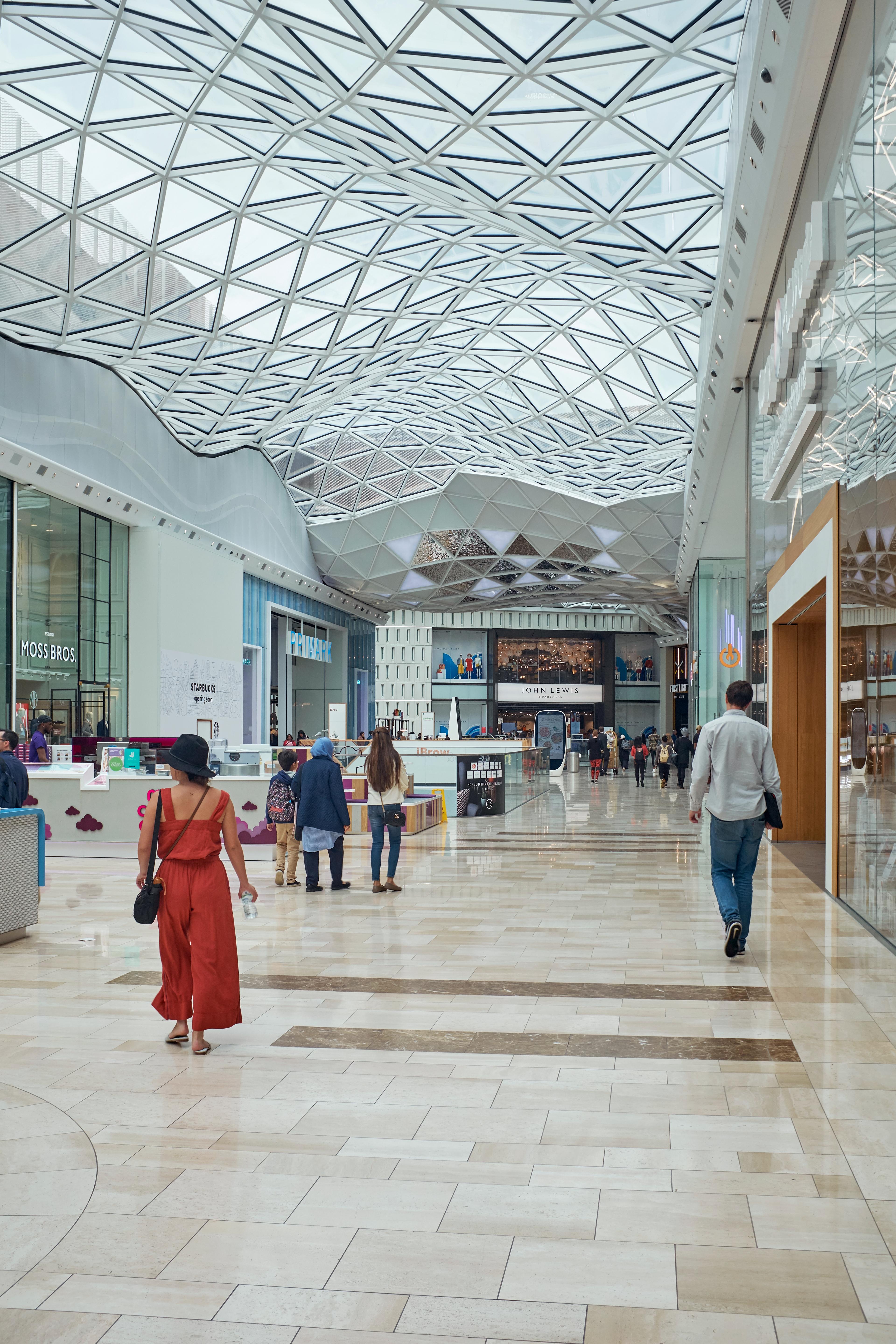
John Lewis and Primark were the two most requested retailers for Phase 2 of Westfield London.
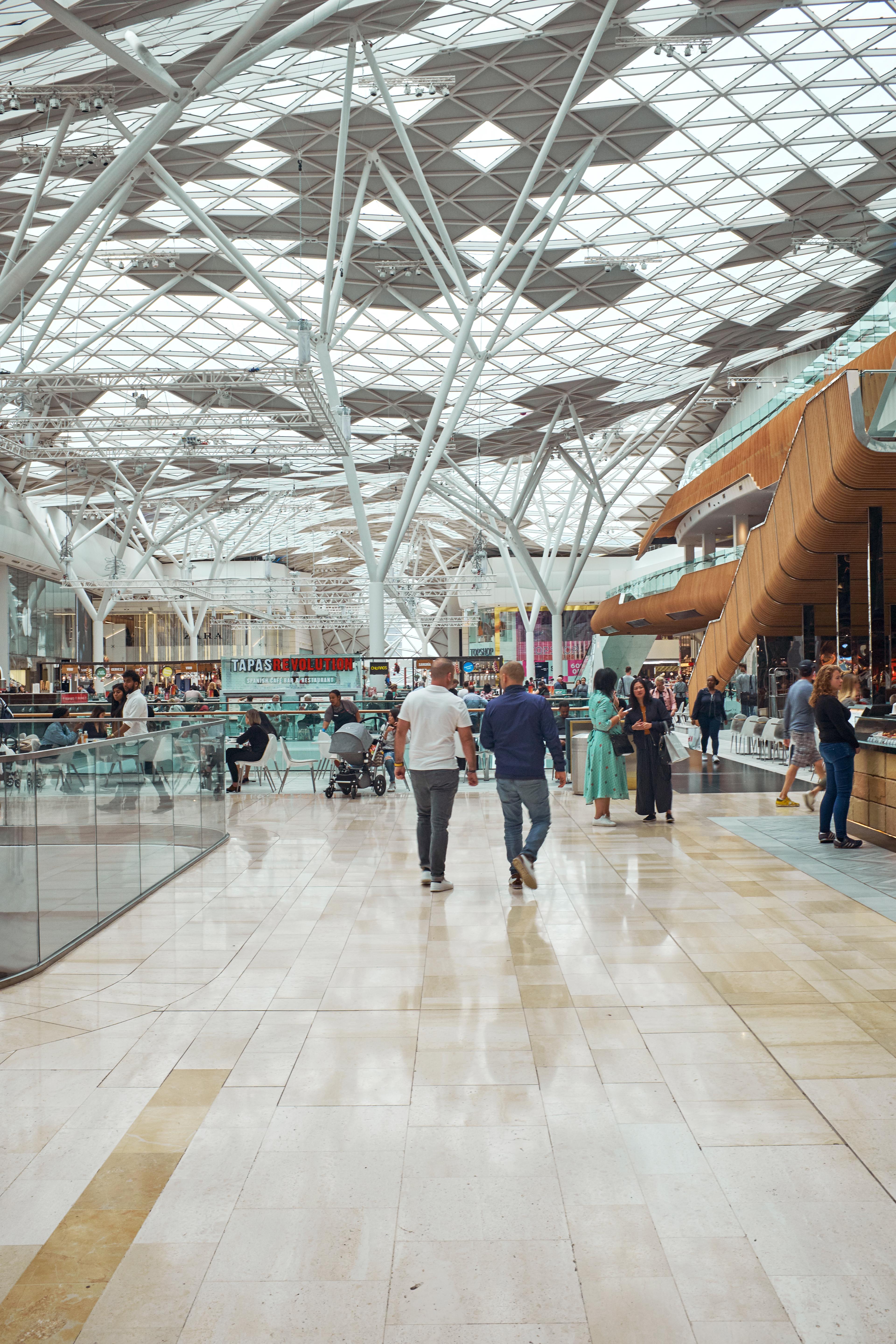
Leisure concepts and 80 F&B venues sit alongside 100 new retail units.
JS: You’ve opened Phase 2 at a difficult time in the market. What are your observations on the market?
EH: We’ve successfully filled a Phase 2 scheme that is a shopping centre in its own right and is the equivalent of Brent Cross Shopping Centre in size. In a challenging market, which it is, we’re very happy with what we have delivered. What we’re finding is that space requirements do change. Within ten years of launching the original scheme, space requirements are very different, and retail has evolved.
Although retailers are reporting that the market is incredibly challenging for a number of reasons, what we’re seeing is there’s still significant opportunity in the retail market to bring in retailers that we don’t already have and to bring in other uses that are growing, such as leisure.
JS: What does the future look like for Westfield?
Katie Wyle: The brand Westfield is synonymous with great shopping and great shopping centres, and we hope to still be known for creating flagship shopping destinations. However, with the assets that we own in the UK, Europe and the US, there’s opportunity to bring in mixed uses. There seems to be a trend of people wanting to live in high-quality urban areas, so clearly there will be a transition to produce more mixed-use developments which respond to this. Over time the brand will be known for not just providing great shopping centres but also for building great urban cities.
Tags
Authors
Jack Sallabank is the founder of Future Places Studio, a place-based research and strategy studio that specialises in exploring the macro and micro trends impacting the built environment.
Katie Wyle, General Manager of Westfield, has been involved in Westfield London’s Phase 2 expansion and now runs Westfield London.
Millie Wilson, Director at Bruce Gillingham Pollard, is a retail agent working on Television Centre and White City Place on behalf of developer Stanhope.
Emma Hindes, General Manager of Westfield, has been involved in Westfield London’s Phase 2 expansion.
Nigel Pickup, Head of Commercial Property at TfL, looks after TfL’s portfolio of more than 800 arches across London.
Laura Fernie, Senior Commercial Asset Manager at TfL, is looking after the delivery of TfL’s White City arches project.
Publication
This article appeared in Exchange Issue No. 2, which explores the changing nature of the retail sector with contributions and design analysis from leading retailers, developers, consultants and more.
Read more